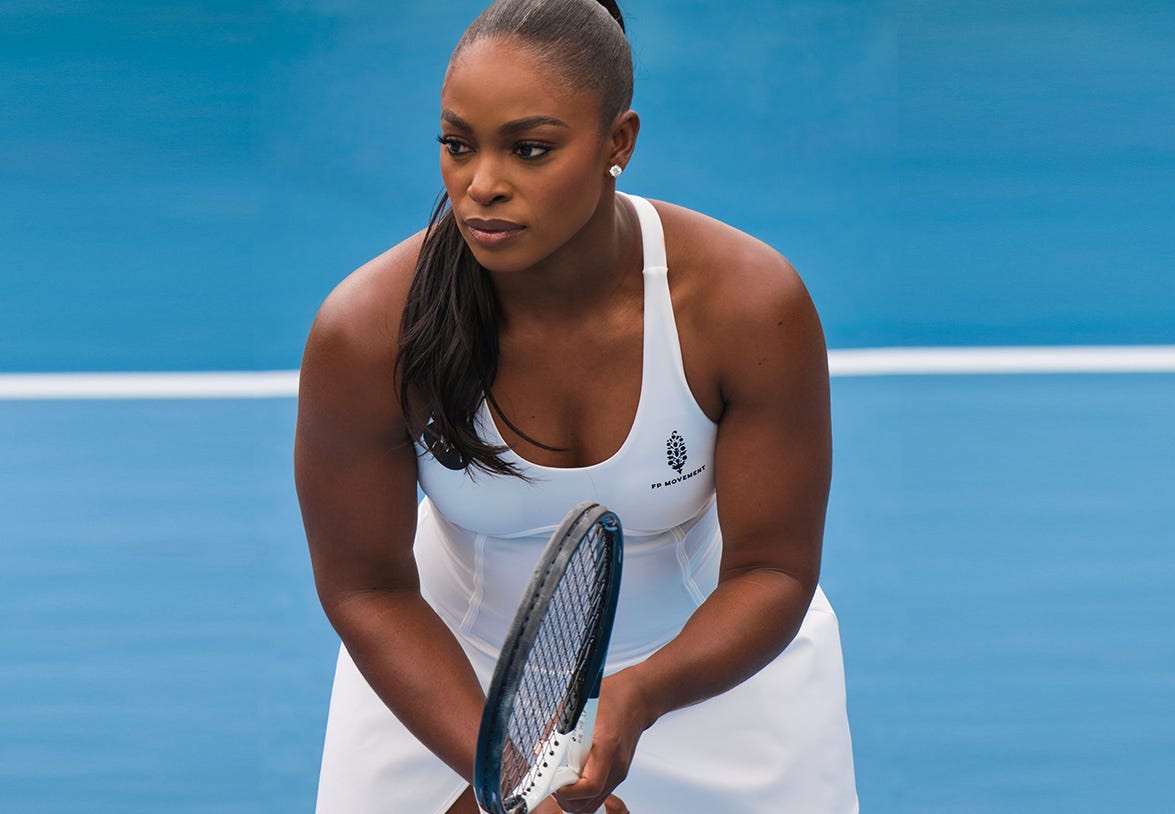How FP Movement’s early bet on tennis popularity paid off
A deep dive into the activewear brand's 360-degree strategy for tennis category success with its managing director of brand marketing.
Welcome to the first Kitted Deep Dive — a longer format of my Kitted series in which I go deep on the fashion brands making waves in tennis right now. Come for the business insights, stay for execs keeping it real.
In 2021, amid a global pandemic that saw people living full-time in athleisure and workout wear, FP Movement—the athletic sub-brand of Free People—was gifted with its own marketing budget for the first time, nine years after its launch. “The brand had exploded,” said Courtney Weis, the managing director of FP Movement Brand Marketing. When the team sat down to define which categories they wanted to put that money towards, it was running, hiking, and mat (e.g. yoga and pilates) they bet on first. But as more people started to prioritize getting outside (finally!) to re-engage with their communities, it became apparent fast that racquet was a must.
What started with one product—a performance skirt—has grown to 106, with most offered in a host …




